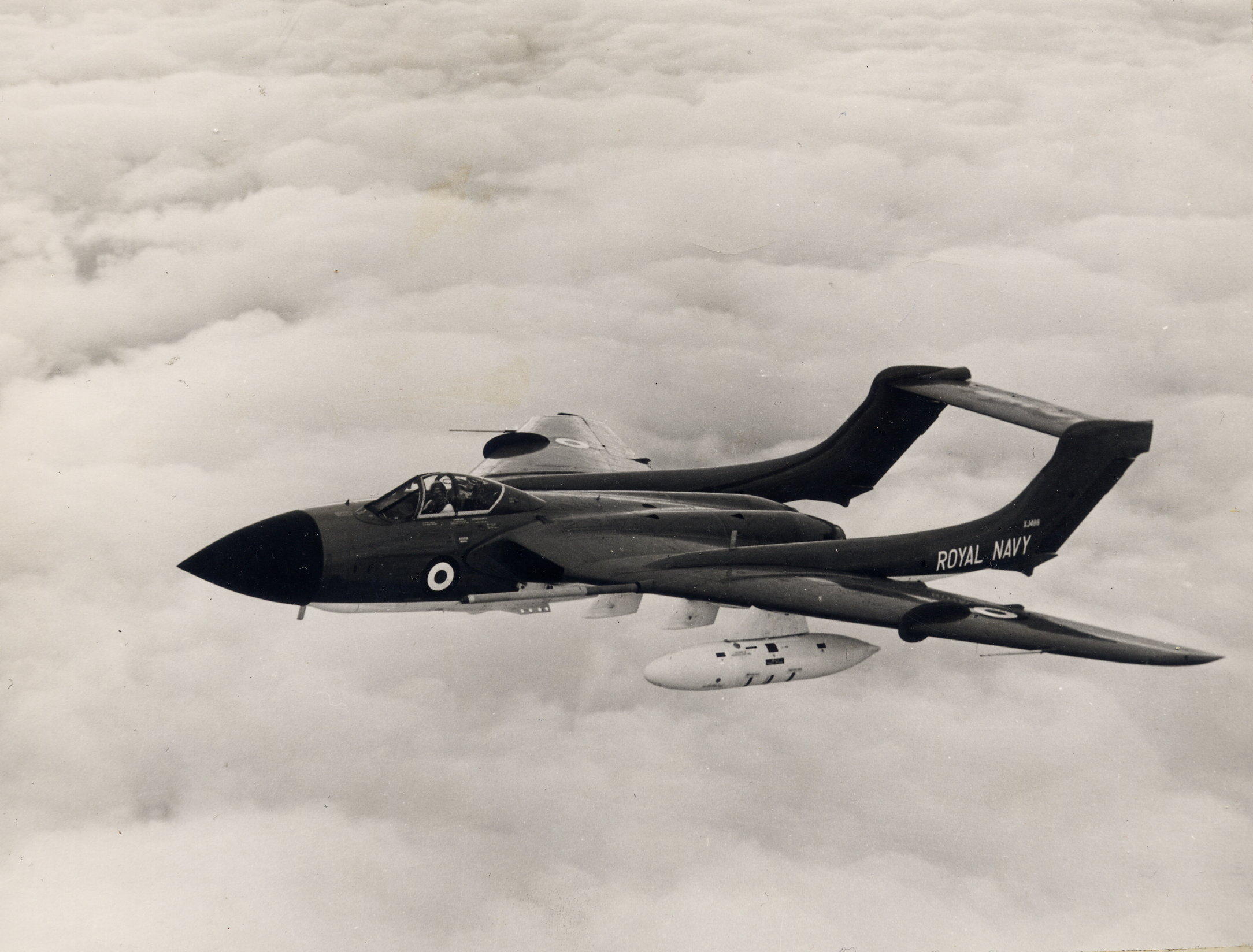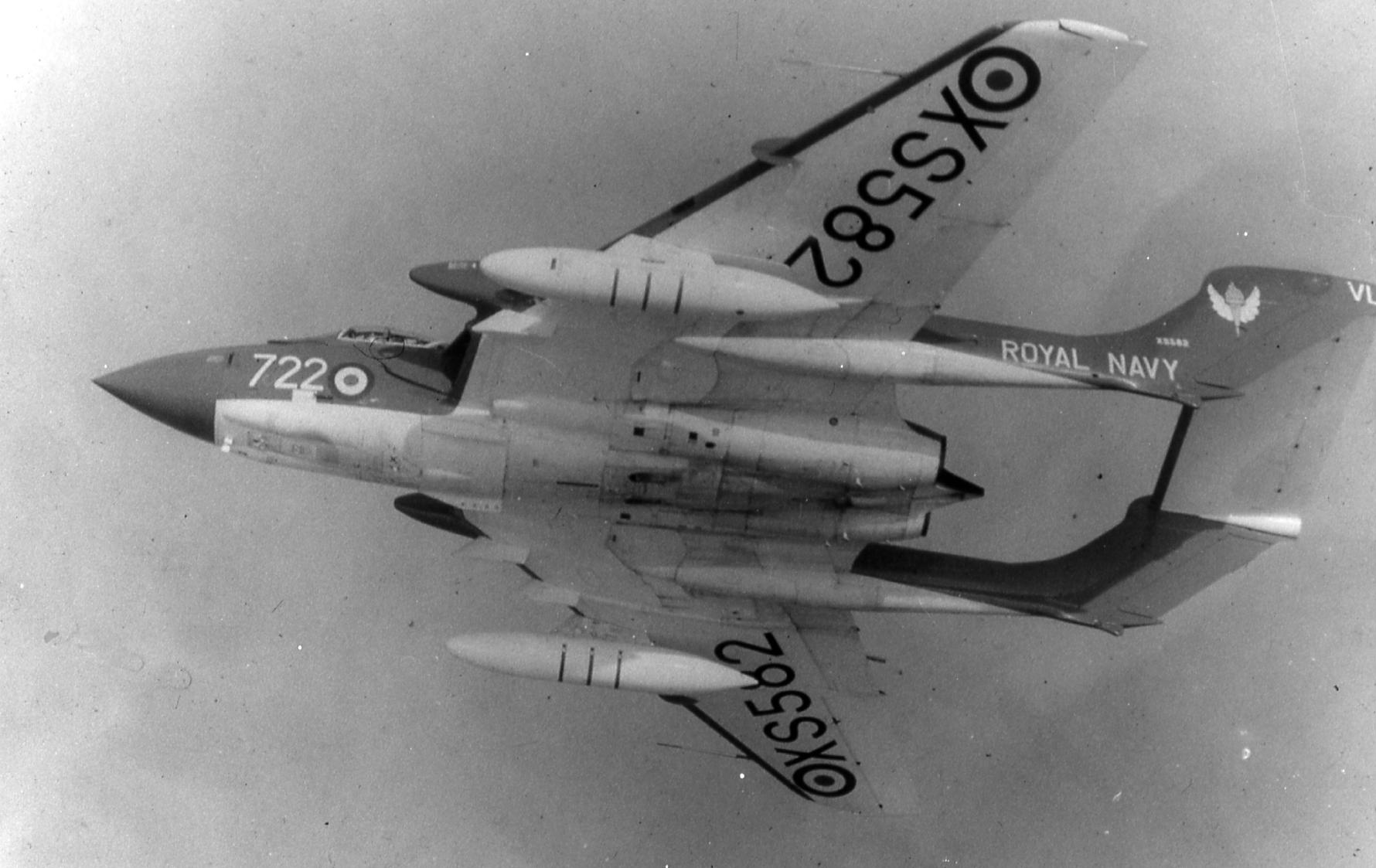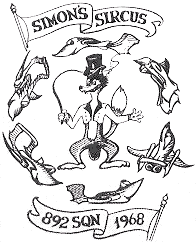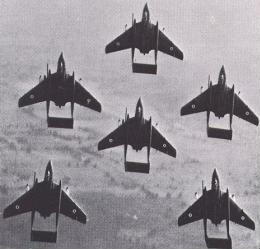
Sea Vixen

I wanted to dedicate a page to my favourite aircraft - the De Havilland Sea Vixen. Not a full history of the type - there are many excellent books and other websites (in particular Damien Burke's Thunder and Lightings pages) that already provide this. Instead this is just a tribute from an enthusiast's perspective.
There's an old saying that 'if something looks right it is right' and, looking at the official De Havilland photograph of Sea Vixen FAW1 XJ488 above, the Sea Vixen definitely was right. My father, Bob, stuck this particular photo in his pilot's log book opposite his 893 Squadron\HMS Victorious summary page in November 1964 and I've never doubted that it reflects the fondness and respect that he had for the type following his 22 months of association with it.
What is it about the Sea Vixen - first flown in 1951 (as the prototype DH110), introduced into front line Fleet Air Arm service in 1959, mainstay of Fleet defence during the 1960s and withdrawn prematurely in 1972 - that impresses me? Aside from the obvious fact that it was the aircraft that my father flew in his front line service in the Fleet Air Arm, there are a number of other compelling reasons. First of all there is the overall appearance and dimensions of it. The Sea Vixen, with its impressive twin boom and swept wing configuration, has a span of 50 feet giving some 700 sq. ft of wing surface - huge compared to other carrier borne aircraft at the time. Its two Rolls Royce Avon 208 turbojets give it literally twice the power of the Hawker Hunter. In addition there is the fact that the Vixen was the first British Naval fighter to have a fully integrated weapons system and have true multi-role capability. Gone were the cannon\guns of former years and in came the Firestreak (and on the FAW2 the Red Top) heat seeking missiles, together with many other options ranging from 2" rocket packs to 500lb or 1000lb bombs and Bullpup air-to-ground missiles.
However, my main reason is more profound and hard to fully explain. Essentially it comes down to what I perceive as a lack of appreciation and recognition of this type by many people. Many books that claim to be comprehensive histories of modern military aircraft make little mention of the Sea Vixen. Some do not even include it at all. During recent years I've found that the more I've learnt about the Sea Vixen the more I've come to appreciate it. Unfortunately, whilst many aviation enthusiasts that I have met are often happy to talk about the performance of Tornados, Harriers, F-14 'Tomcats', F-15s, F-16s, Phantoms, Lightnings and Buccaneers - to name just a few- they usually give me a polite blank look when I mention the wonders of the Sea Vixen. Why this should be the case has always puzzled me but it may be due to the fact that the Vixen kept the peace so effectively during the 1960s and, despite some very close calls, was never fully engaged in outright combat. Perhaps there is also the fact that the Sea Vixen was not fitted with afterburners and did not have supersonic capability in a straight line (however, Mach 1.2 could easily be attained in a shallow dive from high altitude). Assuming these reasons are a true reflection of popular opinion then it is a great shame as the Vixen's performance compares very favourably with its rivals.
In many ways the Sea Vixen is an underrated aircraft as recollections of former aircrew will testify. The Sea Vixen had excellent turning characteristics in the air and was perfect for dog fighting. Other types, namely the Gloster Javelin and English Electric Lightning, were designed specifically as interceptors, i.e. to locate and destroy their airborne targets as quickly as possible and return to base. One former Sea Vixen pilot, the late Marcus Edwards, is on record as saying that he was surprised at how easily the Vixen could intercept and despatch the Javelin during practice intercepts off Singapore and could only speculate as to how the RAF would have faired had it chosen the Vixen instead of the Javelin when it made its decision on its all weather interceptor in the 1950s. It may come as a surprise to some that there is also at least one account of where a Sea Vixen FAW2 beat a Phantom FG1 (F-4K) during a simulated dog fight. The late Commander E.G. (Graham) Wilcock RN, who was the Vixen's observer on this occasion, told a compelling account of how the Phantom, on re-heat off Lands End, ran low on fuel before it could lock its Sparrow missiles on the Vixen. Meanwhile the Vixen's excellent Red Top missile system with its 'head on' capability, had successfully located and despatched the Phantom fairly early on. The Vixen crew rubbed 'salt in the wound' by returning to both aircraft's base at RNAS Yeovilton at 'full chat', dumping fuel and asking how many sugars the Phantom crew wanted in their tea! This excellent first hand account, and many more, is included in the excellent book on the Sea Vixen by author Tony Buttler, published by Air-Britain in 2007.

Above: Sea Vixen FAW2 no. XS582 of 766 Squadron, RNAS Yeovilton (photo courtesy of the FAAM archive)
Fortunately, in preservation the Sea Vixen has had the last laugh. Whilst a mixture of financial constraints and red tape has prevented any airworthy examples of nearly all the Vixen's contemporaries, i.e. the Javelin, Scimitar, Lightning, Phantom and Buccaneer*, from taking to the air in the UK since completing their service lives, a serviceable Sea Vixen -XP924 - is now a regular on the airshow circuit once again. Hopefully this will continue to go a long way in raising the profile of this type of aircraft and of a challenging and crucially important, but often less celebrated, period of the Fleet Air Arm. Long may it last.
(* hopefully this will soon change following recent Civil Aviation Authority (CAA) approval to fly being awarded to Buccaneer S2b XX885/G-HHAA)
Photos of the preserved airworthy Sea Vixen taken at Yeovilton Air Day, 9th July 2011
(click on thumbnail for full sized image)
Display teams
Two Sea Vixen display teams existed for short separate periods during the 1960s. The first called 'Fred's Five' was formed by 766 Squadron in 1962 under the command of Lt. Cdr P.B. Reynolds RN.
The second display team performed during Summer 1968 and comprised six Sea Vixens from 892 Squadron. 'Simon's Sircus' named after the Squadron's commanding officer Lt. Cdr. Simon Idiens RN - were a very popular feature at that summer's air days and must be a strong candidate for the finest British display team ever seen. Especially when you take into account that the displays were performed by aircraft twice as big as the Gnats used by the RAF Red Arrows team...........


Above: Simon's Sircus display team publicity material, 1968
Page last updated: 27th August 2011